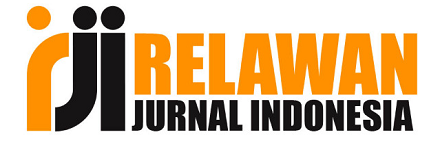TANTANGAN PERTUMBUHAN KREDIT DI ERA NEW NORMAL: ANALISIS PERILAKU BANK KONVENSIONAL DAN SYARIAH PASCA COVID-19
DOI:
https://doi.org/10.33474/jimmu.v9i1.22012Kata Kunci:
Pertumbuhan Kredit, Bank Umum Syariah, New Normal, COVID-19Abstrak
Penelitian ini bertujuan untuk mengisi kesenjangan dalam pemahaman tentang perilaku bank umum konvensional dan syariah di Indonesia selama krisis COVID-19, terutama dalam periode setelah penerapan protokol new normal oleh pemerintah Indonesia. Penelitian ini mengkaji dampak jenis operasi (konvensional atau syariah) pada pertumbuhan kredit bank umum di Indonesia selama periode new normal yang disebabkan oleh COVID-19. Data panel triwulanan dari 54 bank umum (42 konvensional dan 12 syariah) digunakan dari kuartal kedua 2020 hingga kuartal keempat 2022. Hasil analisis menunjukkan bahwa bank umum konvensional memiliki pertumbuhan kredit lebih tinggi dibandingkan bank umum syariah. Pengaruh positif terhadap pertumbuhan kredit terlihat dari ukuran aset dan tingkat modal, terutama di bank konvensional. Jenis operasi bank, profitabilitas dan resiko kredit tidak memiliki pengaruh yang signifikan pada pertumbuhan kredit. Temuan ini memberikan dasar bagi rekomendasi kebijakan, seperti fokus pada bank konvensional untuk pertumbuhan kredit yang berkelanjutan, serta perhatian pada profitabilitas dan efisiensi operasional di bank syariah.
This study aims to fill the gap in understanding of the behavior of conventional and Islamic banks in Indonesia during the COVID-19 crisis, especially in the period following the implementation of new normal protocols by the Indonesian government. This study examines the impact of operating type (conventional or Islamic) on commercial bank credit growth in Indonesia during the new normal period caused by COVID-19. Quarterly panel data from 54 commercial banks (42 conventional and 12 Islamic) were used from the second quarter of 2020 to the fourth quarter of 2022. The analysis results indicate that conventional commercial banks exhibit higher credit growth compared to Islamic commercial banks. The positive impact on credit growth is evident from the asset size and capital levels, particularly in conventional banks. The type of bank operations, profitability, and credit risk do not have a significant influence on credit growth. These findings provide the basis for policy recommendations, such as a focus on conventional banks for sustainable credit growth, as well as attention to profitability and operational efficiency in Islamic banks.
Referensi
Abedifar, P., Molyneux, P., & Tarazi, A. (2013). Risk in islamic banking. Review of Finance, 17(6), 2035–2096. https://doi.org/10.1093/rof/rfs041
Altunbaş, Y., Tommaso, C. Di, & Thornton, J. (2016). Do better-capitalized banks lend less? Evidence from European banks. Finance Research Letters, 17, 246–250. https://doi.org/10.1016/j.frl.2016.03.022
Beck, T., Demirgüç-Kunt, A., & Merrouche, O. (2013). Islamic vs. conventional banking: Business model, efficiency and stability. Journal of Banking and Finance, 37(2), 433–447. https://doi.org/10.1016/j.jbankfin.2012.09.016
Berger, A. N., Black, L. K., Bouwman, C. H. S., & Dlugosz, J. (2017). Bank loan supply responses to Federal Reserve emergency liquidity facilities. Journal of Financial Intermediation, 32, 1–15. https://doi.org/https://doi.org/10.1016/j.jfi.2017.02.002
Bilgin, M. H., Danisman, G. O., Demir, E., & Tarazi, A. (2021). Bank credit in uncertain times: Islamic vs. conventional banks. Finance Research Letters, 39. https://doi.org/10.1016/j.frl.2020.101563
Bitar, M., & Tarazi, A. (2019). Creditor rights and bank capital decisions: Conventional vs. Islamic banking. Journal of Corporate Finance, 55, 69–104. https://doi.org/https://doi.org/10.1016/j.jcorpfin.2018.11.007
Bonaccorsi di Patti, E., & Sette, E. (2016). Did the securitization market freeze affect bank lending during the financial crisis? Evidence from a credit register. Journal of Financial Intermediation, 25, 54–76. https://doi.org/https://doi.org/10.1016/j.jfi.2015.06.002
Boubakri, N., Mirzaei, A., & Saad, M. (2023). Bank lending during the COVID-19 pandemic: A comparison of Islamic and conventional banks. Journal of International Financial Markets, Institutions and Money, 84(April 2020), 101743. https://doi.org/10.1016/j.intfin.2023.101743
Brei, M., Gambacorta, L., & von Peter, G. (2013). Rescue packages and bank lending. Journal of Banking and Finance, 37(2), 490–505. https://doi.org/10.1016/j.jbankfin.2012.09.010
Caporale, G. M., Çatık, A. N., Helmi, M. H., Menla Ali, F., & Tajik, M. (2020). The bank lending channel in the Malaysian Islamic and conventional banking system. Global Finance Journal, 45(May 2019), 100478. https://doi.org/10.1016/j.gfj.2019.100478
Carlson, M., Shan, H., & Warusawitharana, M. (2013). Capital ratios and bank lending: A matched bank approach. Journal of Financial Intermediation, 22(4), 663–687. https://doi.org/https://doi.org/10.1016/j.jfi.2013.06.003
Delis, M. D., Kouretas, G. P., & Tsoumas, C. (2014). Anxious periods and bank lending. Journal of Banking & Finance, 38, 1–13. https://doi.org/https://doi.org/10.1016/j.jbankfin.2013.09.009
Gambacorta, L., & Shin, H. S. (2018). Why bank capital matters for monetary policy. Journal of Financial Intermediation, 35, 17–29. https://doi.org/https://doi.org/10.1016/j.jfi.2016.09.005
Gujarati, D. N. (2004). Gujarati: Basic Econometrics, Fourth Edition. In The McGraw−Hill Companies. Diambil dari https://medium.com/@arifwicaksanaa/pengertian-use-case-a7e576e1b6bf
Ibrahim, M. H. (2016). Business cycle and bank lending procyclicality in a dual banking system. Economic Modelling, 55, 127–134. https://doi.org/10.1016/j.econmod.2016.01.013
Ibrahim, M. H., & Rizvi, S. A. R. (2018). Bank lending, deposits and risk-taking in times of crisis: A panel analysis of Islamic and conventional banks. Emerging Markets Review, 35, 31–47. https://doi.org/10.1016/j.ememar.2017.12.003
Issa, S. (2022). Financial Crises and Business Cycle Implications for Islamic and Non-Islamic Bank Lending in Indonesia. Journal of Risk and Financial Management, 15(7). https://doi.org/10.3390/jrfm15070292
Khan, H. H., Ahmad, R. B., & Gee, C. S. (2016). Bank competition and monetary policy transmission through the bank lending channel: Evidence from ASEAN. International Review of Economics & Finance, 44, 19–39. https://doi.org/https://doi.org/10.1016/j.iref.2016.03.003
Zulkhibri, M., & Sakti, M. R. P. (2018). Procyclicality and Bank Lending Behavior in Indonesia: the Case of Dual Banking System. Journal of Islamic Monetary Economics and Finance, 4(1), 23–38. https://doi.org/10.21098/jimf.v4i1.921
Unduhan
Diterbitkan
Terbitan
Bagian
Lisensi
Hak Cipta (c) 2024 Jurnal Ilmu Manajemen (JIMMU)

Artikel ini berlisensi Creative Commons Attribution 4.0 International License.

Ciptaan disebarluaskan di bawah Lisensi Creative Commons Atribusi 4.0 Internasional.










